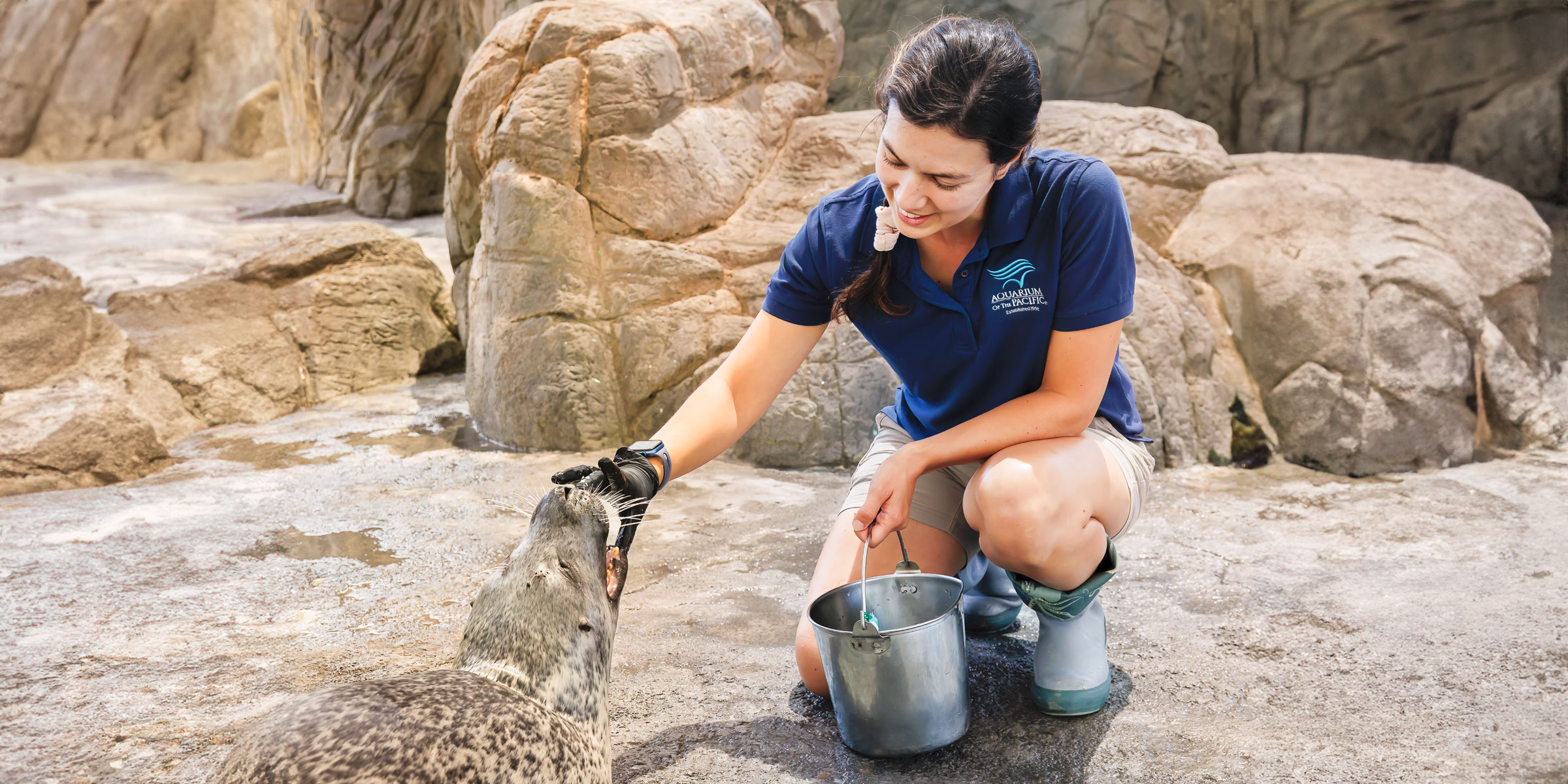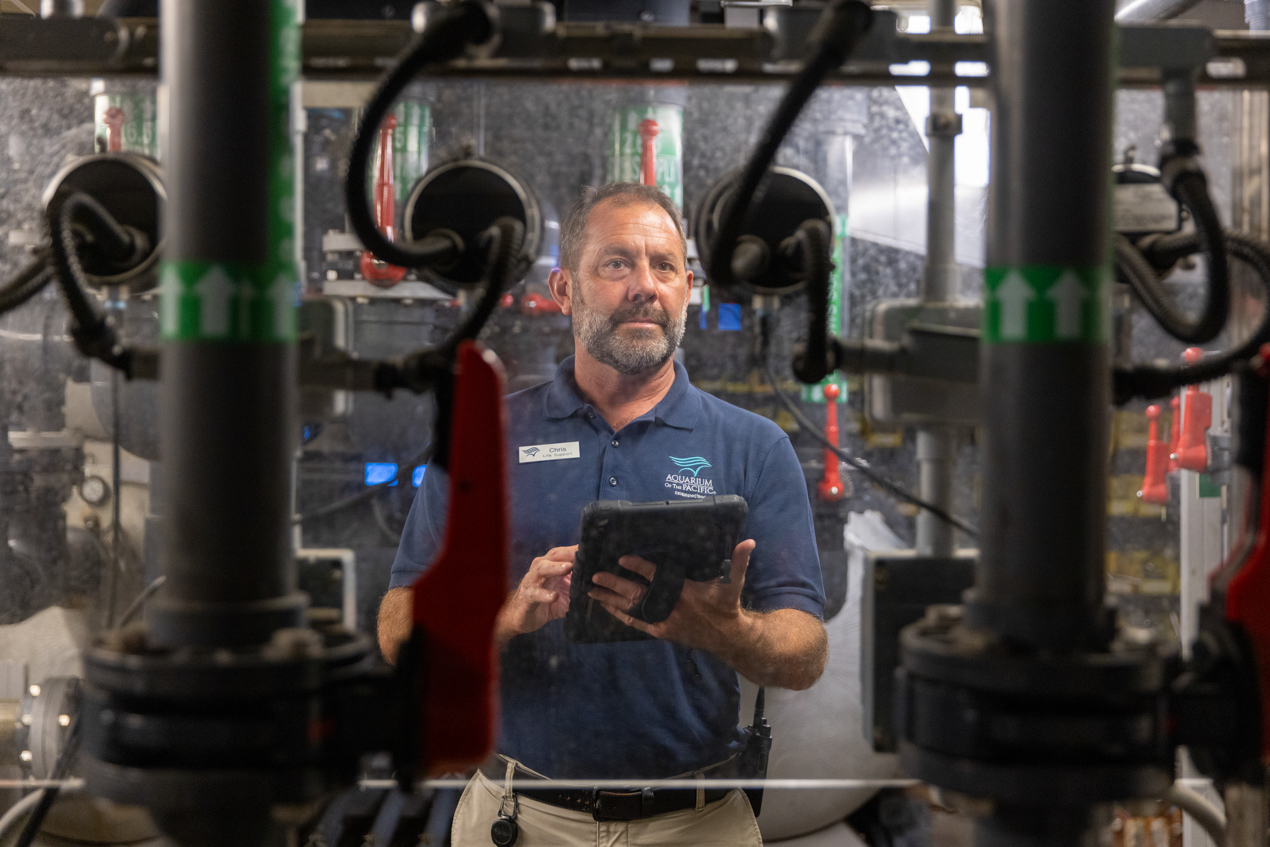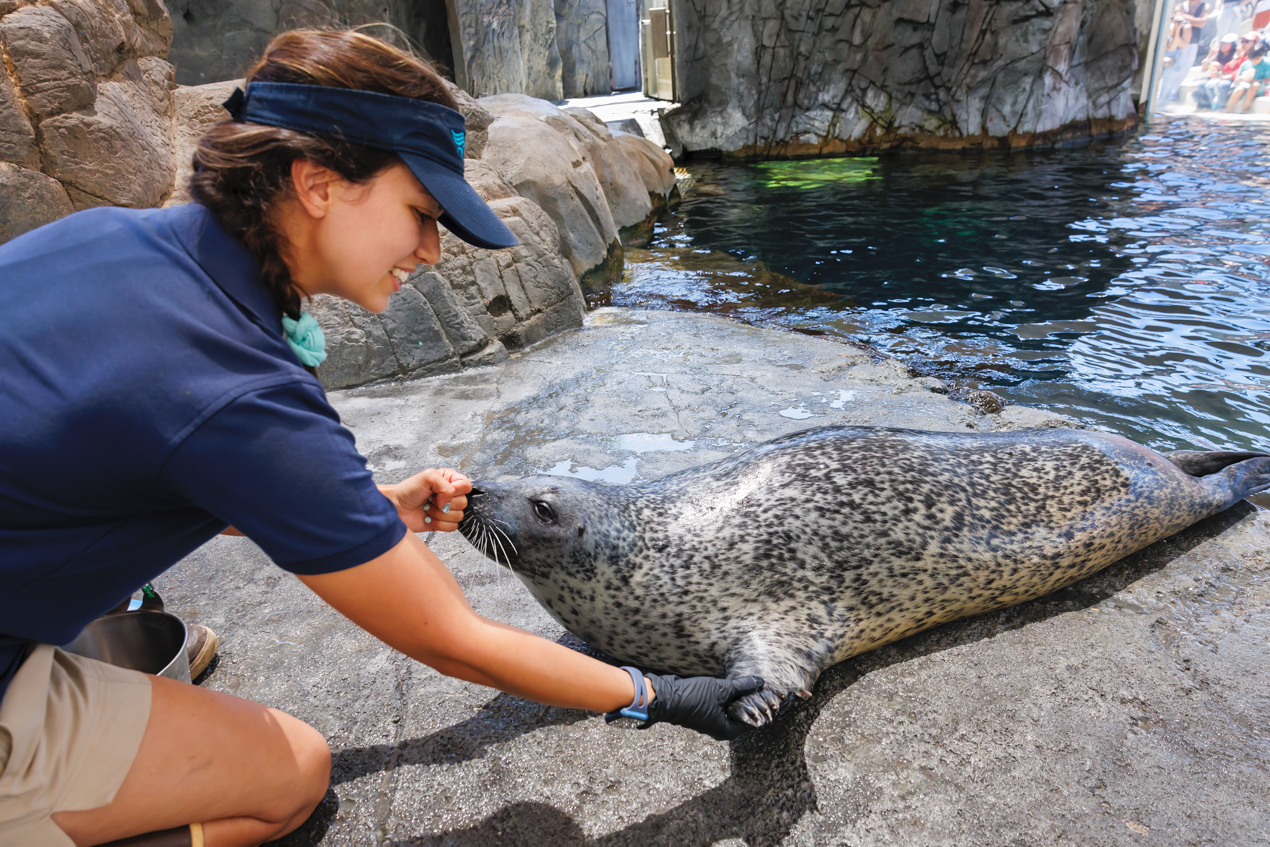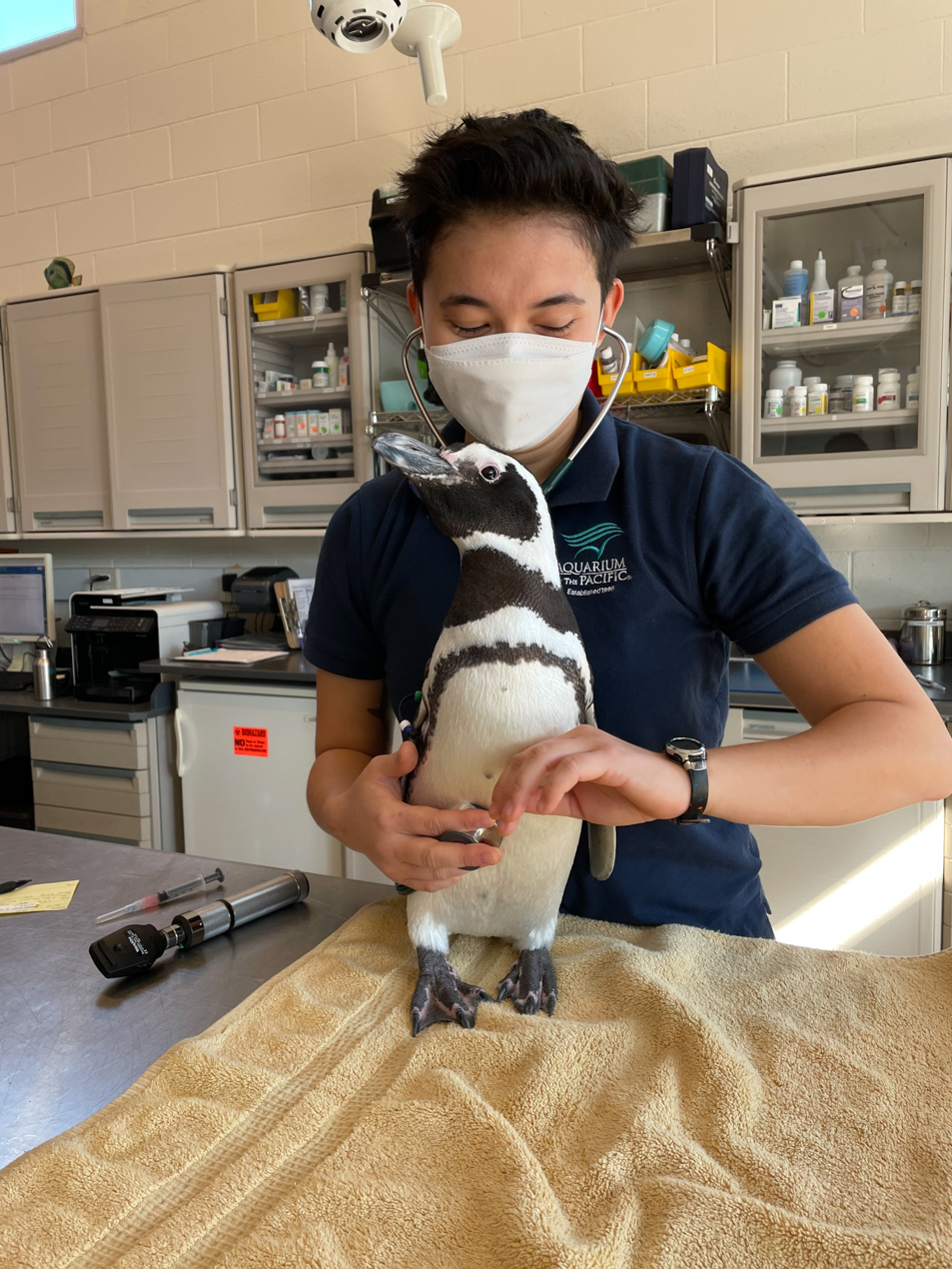
Conservation Corner
Animal Welfare: An Industry Standard
As a nonprofit education and conservation organization, the Aquarium of the Pacific is committed to setting the standard in animal well-being and welfare to ensure our animals are healthy, happy, and thrive under our care.
The Aquarium of the Pacific is an accredited member of the Association of Zoos and Aquariums (AZA). Established in 1924, AZA is a non-profit organization dedicated to the advancement of zoos and aquariums in the areas of conservation, education, science, and recreation.
Since 1974 AZA has used an accreditation process to certify that its member institutions are meeting the highest standards. The standards are centered around three core principles, animal welfare, safety, and guest engagement. Institutional performance is measured in 12 areas, ranging from animal care, welfare, & management to safety & security. Adjustments are made to the standards each year as needed, allowing them to continue to represent the best practices possible.
Accreditation

The accreditation process requires an institution to perform a self-evaluation as well as undergo a peer evaluation or inspection every five years. The Aquarium of the Pacific was first accredited in 2000 and has met or exceeded the standards at each five-year review since. As of March 2024, 235 other institutions are accredited by AZA. That is less than 10 percent of the animal exhibitors licensed by the United States Department of Agriculture.
The Aquarium exceeds the AZA standard by providing at a minimum animal welfare assessments two times per year, and in many cases more frequent assessments.
Animal welfare is the core of the accreditation standards. It is both a specific category of standards, as well as addressed in the prologue of each of the other categories of standards. Animal welfare is defined as “an animal’s collective physical and mental states over a period of time and is measured on a continuum from good to poor using both input and output-based measures.” As of 2017 the standards require that the welfare of each animal at an institution be evaluated at least annually. This means all animals, from the megafauna like sea lions to the tiny invertebrates like coral.
The Five Domains of Animal Welfare

Nutrition, environment, physical health, behavior, and physiological wellbeing are the five domains of animal welfare and form the structure of the Aquarium’s animal welfare assessments. During an assessment two to four staff score an animal and its habitat across a wide range of indicators such as interactions with the public, light intensity, diet, and activity level. A detailed rubric documents what a score of 1 (unacceptable) or 5 (excellent) means in each indicator, as tailored to each animal or group of animals.
Aquarium staff store these assessments in our animal database, Tracks. Tracks has a record for each animal that is cared for by the Aquarium. The record has a wide range of information from birthday to vet records. Each welfare assessment is included in the animal’s record, and Aquarium staff are able to use long-term records to identify trends and holistically address issues by adjusting care regimes. Staff can also use Tracks to document daily activities like enrichment offered as well as remarkable behaviors. Record keeping and animal-specific enrichment are other elements of the AZA Animal Care, Welfare & Management standards.
Giving the Best Care Possible

The Aquarium’s Animal Welfare Policy and Procedures is the guidebook for how staff give our animals the best care possible as well as meet, and whenever possible exceed, AZA standards. Staff participate in mandatory semi-annual welfare education, and the practices they use continually evolve as new information is received - all with the goal to improve animal welfare. This goal extends beyond the Aquarium’s campus to the industry as a whole. Staff share what they have learned with peers at conferences as well as through updating AZA Animal Care Manuals. Aquarium staff also volunteer as AZA inspectors to assist with the peer review portion of the AZA accreditation process.
Sustained, High Quality Animal Wellbeing is a Team Effort
While animal care staff have the primary responsibility, all departments at the Aquarium participate in achieving this outcome. You can also assist by practicing respectful engagement with the animals, such as not tapping on the exhibits, and following rules shared with you by the staff, such as gentle two-finger touch at the touch exhibits.

Jennie Dean
Jennie Dean is the Aquarium’s inaugural vice president of education and conservation. She focuses on the amplification and enhancement of the Aquarium’s work in species conservation and learning for all audiences. Previously Dean was a program director at the University of California, Los Angeles’ Institute of the Environment and Sustainability, where she oversaw programs engaging the private sector on corporate sustainability and consulted with island governments on sustainable development of their blue economy.